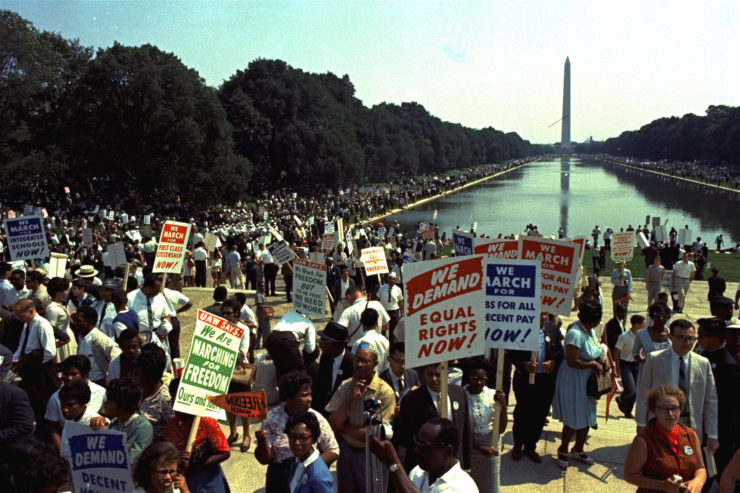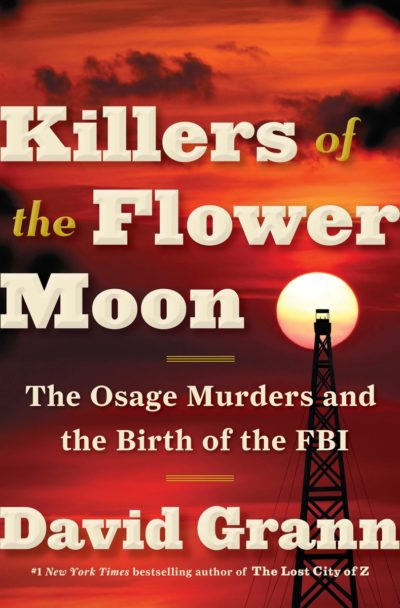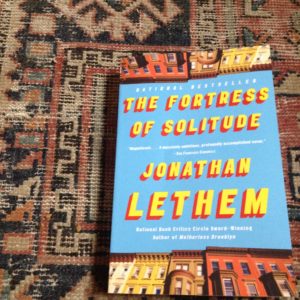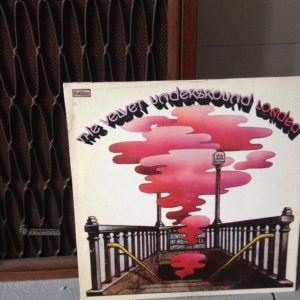
Crowds throng the 1963 march on Washington in which Martin Luther King Jr. gave his eloquent "I have a dream..." speech.
The theme of America and race — and, unfortunately, hatred and even murder — runs through this week’s posts. The Osage Indians who were systematically killed for their oil in David Grann’s book. The white supremacists who wanted to claim a Montana town as their own. And, in a much gentler way, the difficult dance of race relations in the 1970s Brooklyn of a Jonathan Lethem novel.

David Grann's new book, "Killers of the Flower Moon," is about the mysterious killings of Osage Indians.
David Grann and “Killers of the Flower Moon.” This book by the New Yorker writer is already getting a lot of buzz in its first week of publication. Part of that is his reputation, but part of it is the “how could we not know about this?” effect. Grann admits in this Q&A with Frank Bures that even he was stunned that he had never heard of the systematic murder campaign against Osage Indians who had gotten fabulously wealthy from the oil beneath them in the early 20th century. Grann says, ” I think that, just as many of the crimes were covered up because of racial prejudice, this chapter of history was neglected because of prejudice.”
The soundtrack: “Black Gold,” by Foals. “They buried the gold, your ancestry’s sold and left/Just the residue.” Recommended band.
One Great Sentence
“Barcantier, of Le Kremlin, who had jumped in the river, tried in vain to throttle, aided by his Great Dane, the meddler who was dragging him out.”
Félix Fénéon, Le Matin, 1906. Read why we think it’s great.

White supremacist Richard Spencer is a Whitefish resident.
Anne Helen Petersen and the white supremacists who came for Whitefish. In the wake of the election of President Trump and all the hand-wringing over journalists being stuck in their coastal bubbles, contributor Olga Kreimer’s discussion with BuzzFeed writer Petersen seemed particularly relevant. Petersen talks about growing up in the West, and how that informs her reporting, even though she’s based in New York. She says, “I can get people to talk to me because I can say, “I understand what it’s like to be misrepresented on the national level, and I want to get this story right.'”
The soundtrack: “Thin Line Between Love and Hate,” by the Pretenders. The song (a cover of the Persuaders hit) is about relationships, but it could easily apply to the thin line running down Main Street in Whitefish between the white supremacists and those who defended their town against the hate.
What I’m reading online: I know it’s a bit of cliché, but I love vintage VW buses. Some friends and I even rented one for a camping trip. So of course I was going to read the Rachel Monroe piece in The New Yorker called #VanLife, the Bohemian Social Media Movement. It’s so much deeper than the name suggests, capturing the arc of (brief) idealism, selling out, rationalizations and cynicism in a telegenic couple’s Instagram journey.
Another image-based story grabbed me, not the least because I’ve seen the images in question in person. Belfast, Maine, painter Linden Frederick has created a stunning series of artworks, “Night Stories,” that are very Hopper-esque in their outside-looking-in voyeurism. Like with Hopper’s paintings, they invite the viewer to create a story from the things seen and unseen. What’s tremendous about this series is that he enlisted an impressive cadre of top fiction writers to do just that. I cannot wait to read the stories and see the paintings in a museum setting. This project is one of my favorites in recent memory.
And you know when you read one of those stories that you wish went on longer? That was the case with “I’m a goner: El Faro’s last hours,” by Associated Press writer Jason Dearen. In it, he pieces together the final hours of a freighter ship that sank in a hurricane two years ago, killing everyone aboard, a kind of “Perfect Storm” writ large. I would have read something twice as long, weaving in more of the crew’s back stories.
 What’s on my bedside table: I’m heading down to Brooklyn this weekend, so I’m finally reading a novel that people have recommended to me for years: “The Fortress of Solitude,” by Jonathan Lethem. It’s about a boy growing up in the Boerum Hill area of Brooklyn in the 1970s, long before the borough was hipster central. The novel is a thing of beauty, full of humor and sorrow and, most of all, heart. Here’s just one sample of the humor that also manages to capture the feeling of growing up white in the neighborhood: “You could practically feel Robert measuring Arthur’s neck for a yoke, like Wile E. Coyote replacing the Roadrunner with a roast chicken in his mind’s eye.”
What’s on my bedside table: I’m heading down to Brooklyn this weekend, so I’m finally reading a novel that people have recommended to me for years: “The Fortress of Solitude,” by Jonathan Lethem. It’s about a boy growing up in the Boerum Hill area of Brooklyn in the 1970s, long before the borough was hipster central. The novel is a thing of beauty, full of humor and sorrow and, most of all, heart. Here’s just one sample of the humor that also manages to capture the feeling of growing up white in the neighborhood: “You could practically feel Robert measuring Arthur’s neck for a yoke, like Wile E. Coyote replacing the Roadrunner with a roast chicken in his mind’s eye.”
 What’s on my turntable: Although I spend most of my time listening to music on Spotify, sometimes I want to hear the needle touching down on vinyl. This week’s vinyl: “Loaded,” by The Velvet Underground. Going for a New York theme this week. I’m one of the generation that got turned on to the Velvet Underground by R.E.M. (Same for the Byrds.) I just read that despite the pot smoke coming from the subway on the cover, the title allegedly comes from Atlantic Records honcho Ahmet Ertegun asking for “loads of hits.” I still find it hard to believe “Sweet Jane” wasn’t one.
What’s on my turntable: Although I spend most of my time listening to music on Spotify, sometimes I want to hear the needle touching down on vinyl. This week’s vinyl: “Loaded,” by The Velvet Underground. Going for a New York theme this week. I’m one of the generation that got turned on to the Velvet Underground by R.E.M. (Same for the Byrds.) I just read that despite the pot smoke coming from the subway on the cover, the title allegedly comes from Atlantic Records honcho Ahmet Ertegun asking for “loads of hits.” I still find it hard to believe “Sweet Jane” wasn’t one.
If you want to chat about storytelling (or music), you can reach me at editor@niemanstoryboard.org. Or you can find me at @karihow on Twitter.


